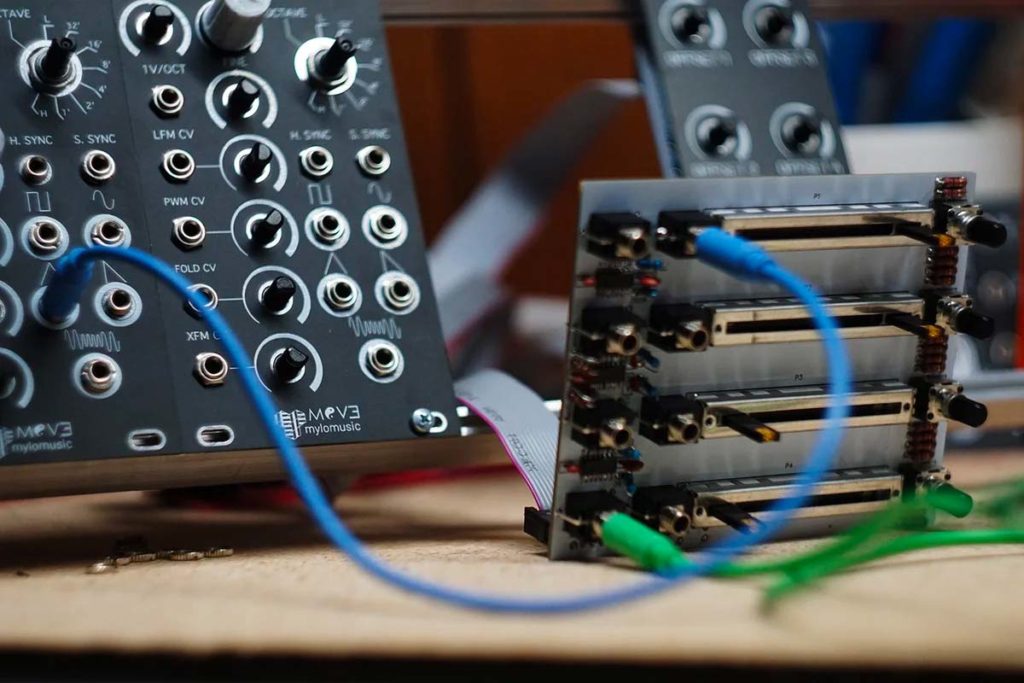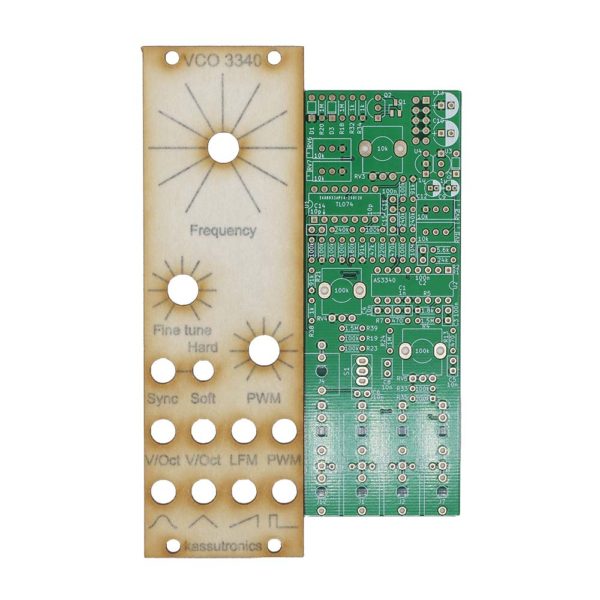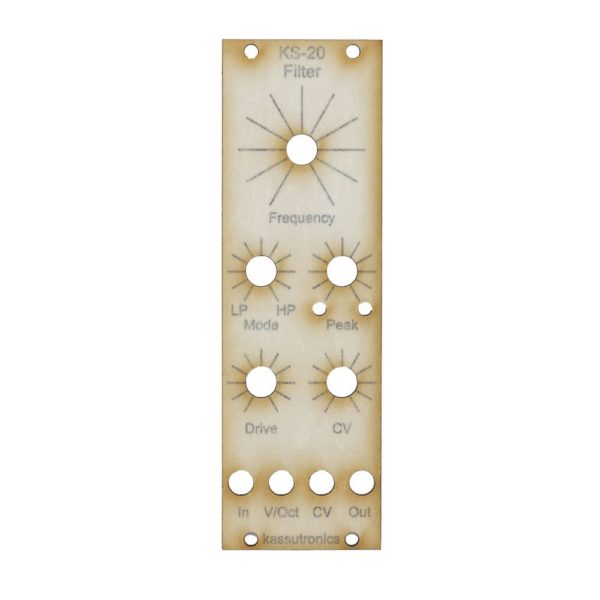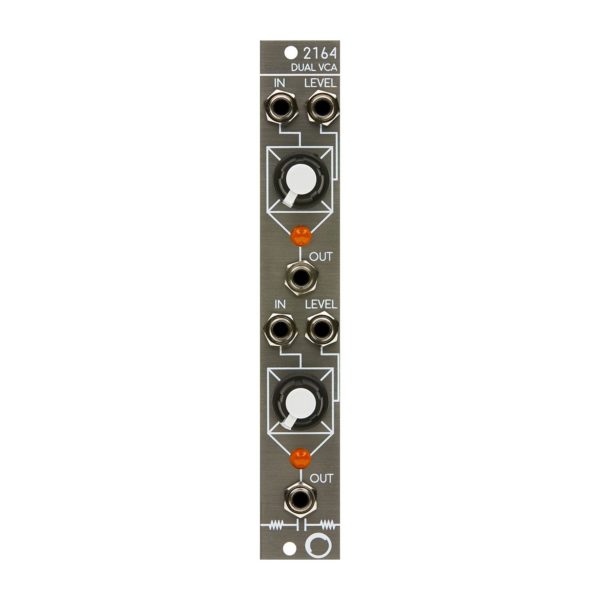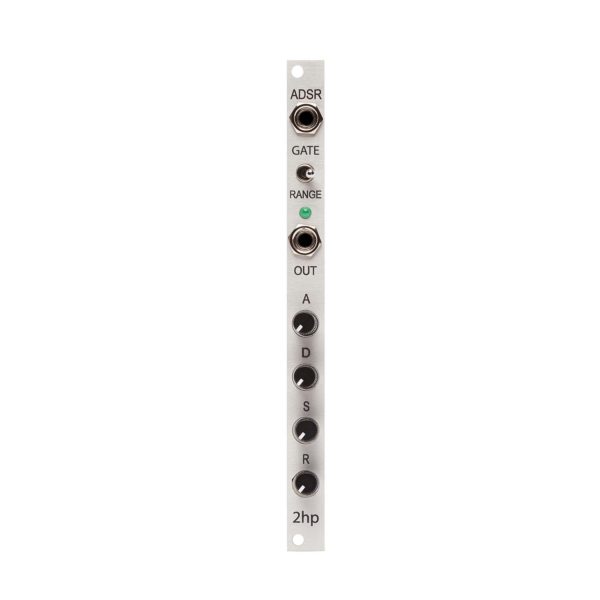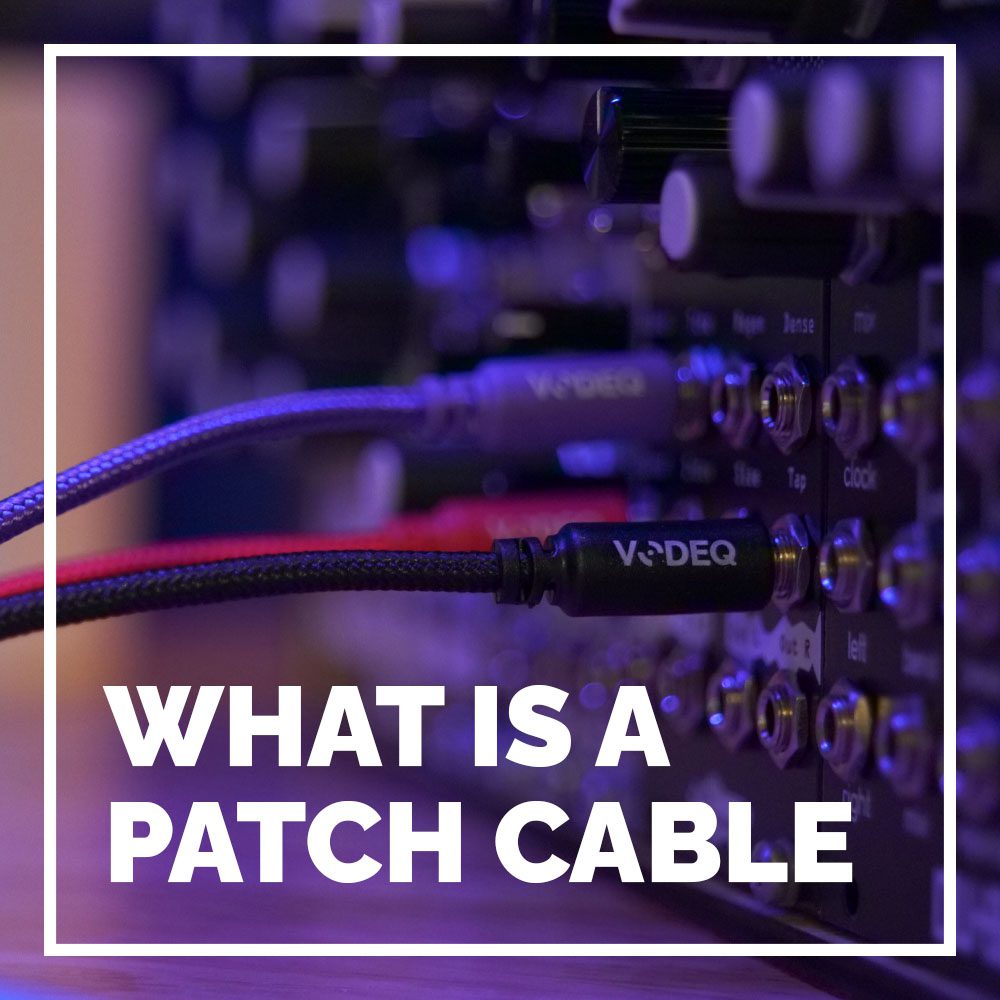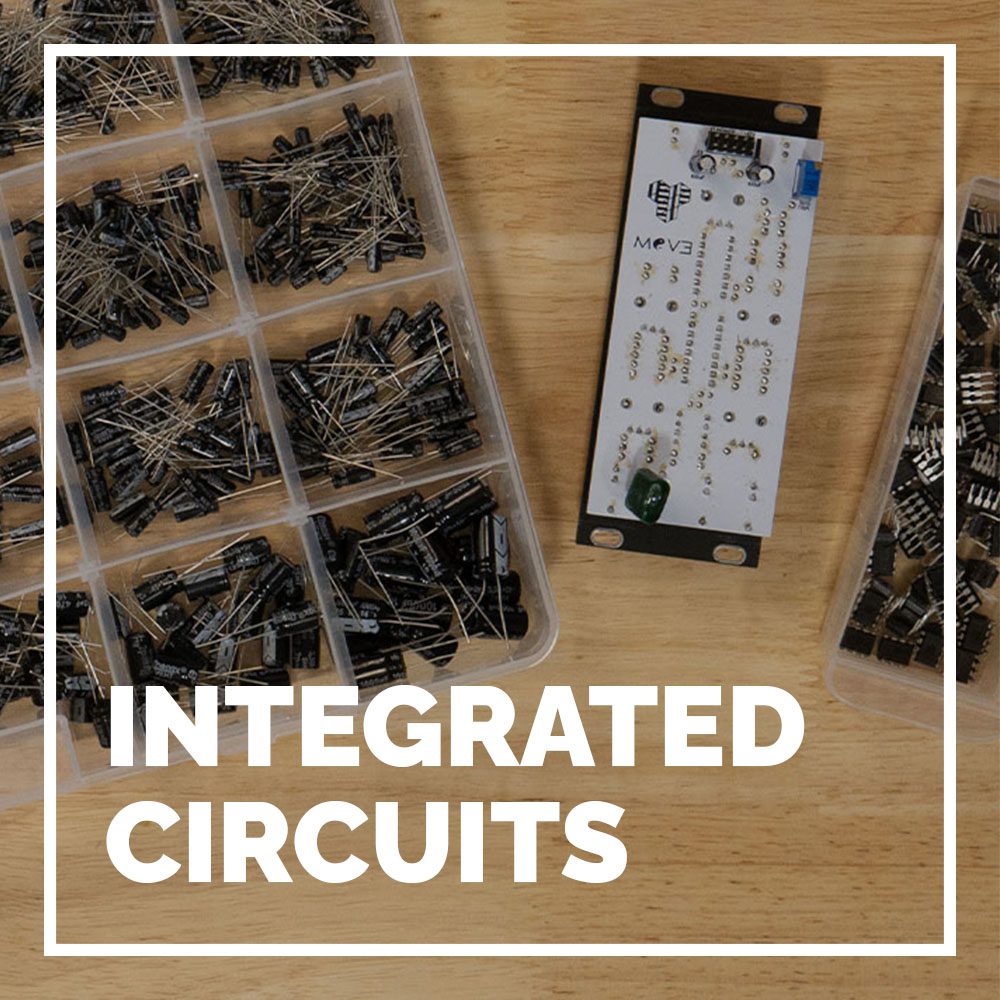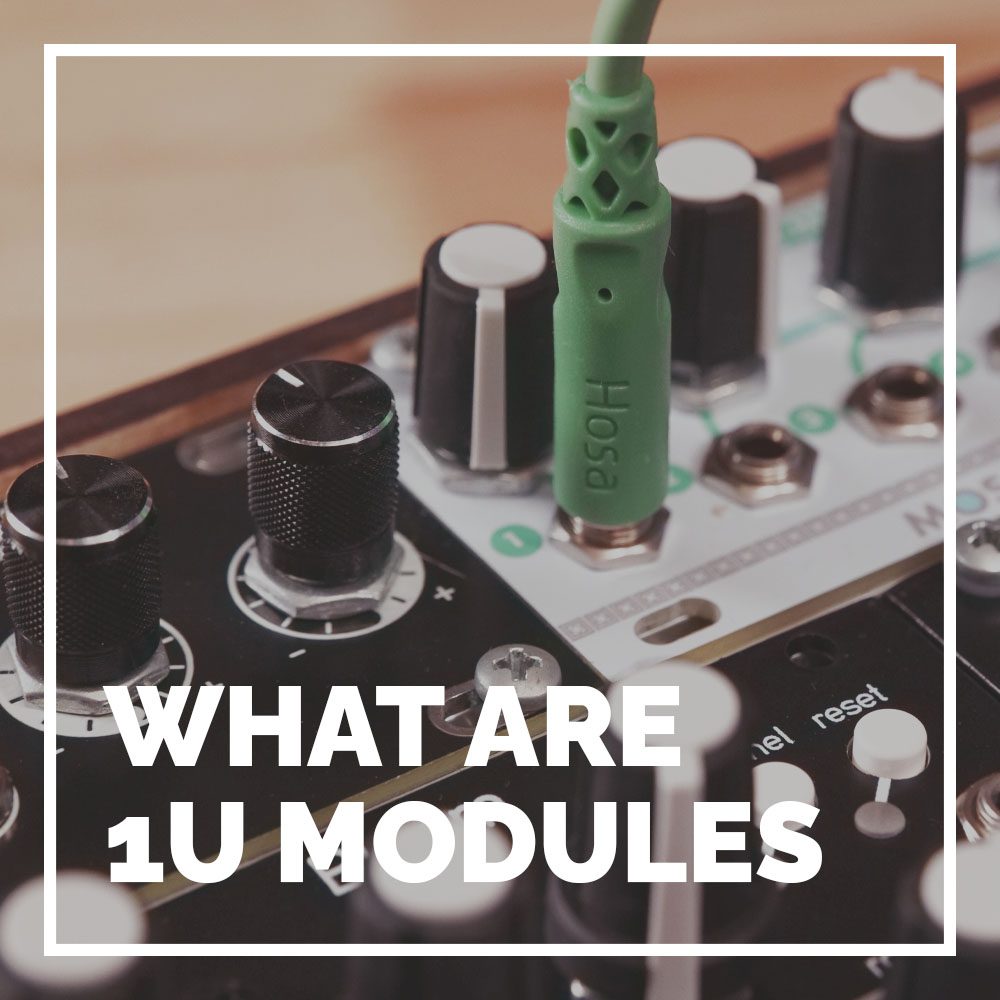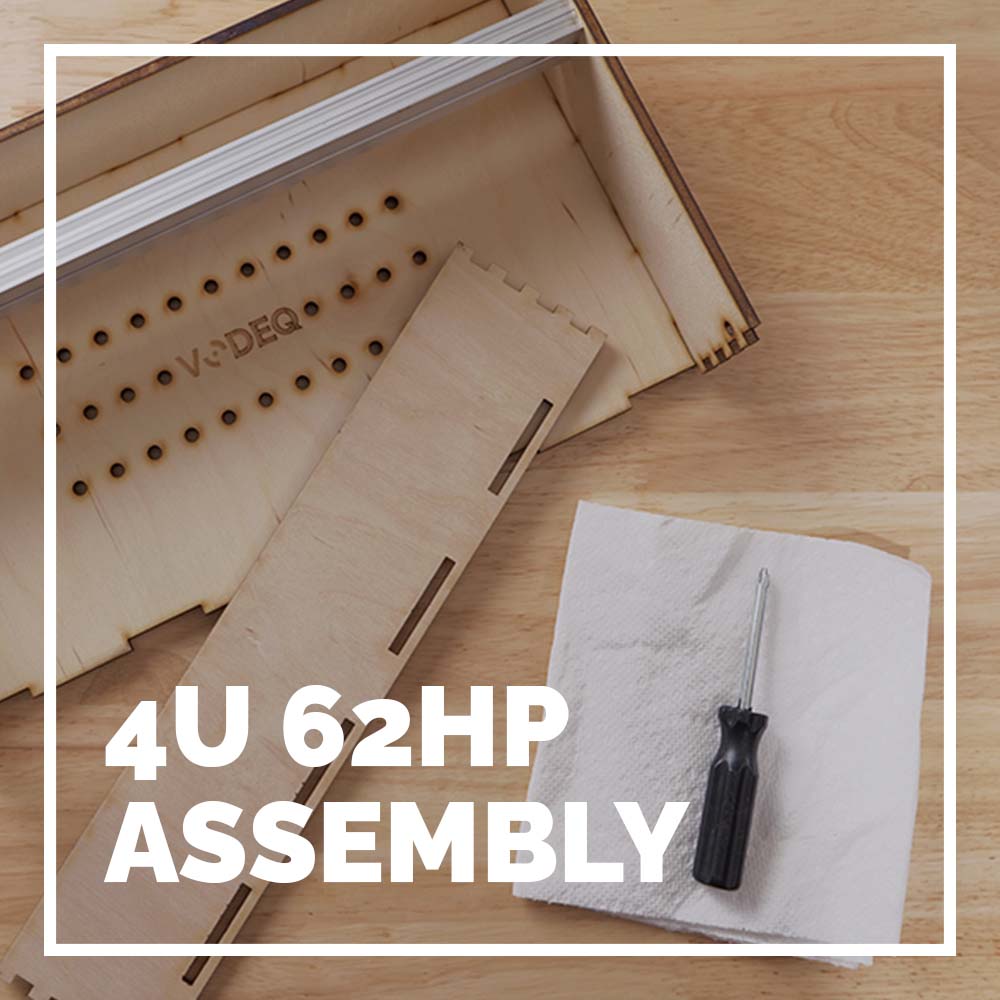What is Modular?
Modular Synthesizers are widely considered to be the starting point of musical synthesis. The birth of modular synthesis brought us voltage controlled electronic waveforms that buzz, boop, and beep with emotion – R2D2 wouldn’t have been able to convey his feelings without them!
Simply put, modular synthesizers are electronic synthesizers pieced out into single “modules”. In a typical all-in-one synthesizer you are limited to the inner connections that have already been made by the manufacture. With modular synthesizers, you are free to decide these connections with patch cables, leaving you free from creative constraints, and allowing you to discover new sounds with each patch you make. Fundamentally, modular synthesizers give you complete control over what’s inside your synthesizer, and how all these parts connect.


01
The Voltage-Controlled Oscillator (VCO)
This is the main sound source of a synth. It outputs electrical “waveforms” that can be controlled with control voltage or “CV”. Most common modular synthesizers like Eurorack use One Volt per Octave (1v/O). This allows users with keyboards or other controllers to easily control the pitch of a VCO, allowing them to play melodies, scales, and more. The common “waveforms” present on VCOs include sine, triangle, square, and sawtooth, however, digital oscillators are often less limited in their sound possibilities (which you can read more about here).
On the right here is a basic 3340 VCO from Kassutronics. This VCO features a large coarse tuning knob allowing you to sweep through the frequencies, as well as a fine tune knob to dial in your tuning. It also includes a pulse width modulation feature that allows you to modify the sound characteristics of the square wave.. This 3340 outputs four waveforms, which from left to right are: sine, triangle, ramp or inverse sawtooth, and square.
02
The Voltage-Controlled Filter (VCF)
These allow you to “filter” out frequencies of a VCO. The most common filter types are low pass filters (LPF), band pass filters (BPF), and high pass filters (HPF). There are many other filter types, but these are the most used. Most modern synthesizers operate on the principle of “subtractive” synthesis: instead of adding together a bunch of frequencies to make a sound, you take an existing waveform and remove the frequencies you don’t want.
Displayed on the left is the Kassutronics KS-20 Filter, inspired by the famous Korg MS-20 Filter.
The features include from top to bottom:
– Main Frequency (what frequency the filtering starts at)
– Two Pole Low Pass Filter
– One Pole High Pass Filter
– “Peak” Resonance with Self Oscillation (if you crank it, it operates as a sine-wave oscillator)
– Drive (Input Gain)
– CV Input and Attenuation
03
The Voltage-Controlled Amplifier (VCA)
Gives you control over the volume of the sound source; these are often modulated by Envelopes to give movement to a sound. By default, most oscillators are constantly outputting sound, even if you aren’t pressing a key. Adding a VCA in tandem with another modulation source (typically an envelope) transforms your static tone into a pluck, pad, lead, or ambient woosh.
The module on the right is small but mighty. The knobs control the overall amount that the CV affects the input, and the CV “LEVEL” inputs are where you’d plug in your envelope or gate. The input is of course where you would input the static or constant sound source to be modified, and the output is the modified input.
04
The Envelope (ADSR)
These allow you to give movement to sound. Envelope generators output control voltage (CV) signals usually in the form of slopes. The most common EG is an ADSR: Attack, Decay, Sustain, and Release. The attack is how quickly the voltage gets to its highest point once you press the key, decay is the time it takes to get from the attack to the sustain point (while you hold the key), and release is the time it takes to get to zero from any point within the other three stages (once you release the key).
There are other Envelope generators like: AD, AR, ADR, ASR, and so on. If you know ADSR you should be able to figure out the others, but as a brief guide:
– AD: Attack Decay
– AR: Attack Release
– ADR: Attack Decay Release
– ASR: Attack Sustain Release
On the right is the 2HP ADSR – you’ll see it has a gate input, CV output, and four controls for each of the aforementioned parameters.
05
The Low Frequency Oscillator (LFO)
This is similar to the VCO, although as the name shows it is much lower in frequency. LFO’s are designed to be used in modulation situations, with slower versions of the standard waveforms like sine, triangle, sawtooth, and square. You can use all of these to open up filters, amplifiers, or modulate anything that takes a CV input. These are always handy to have around, for making things wiggle.
On the right is a tiny LFO from 2HP. This gives you all basic LFO elements in a tiny footprint. It features:
– Range switch allowing you to go from low to audio rate frequencies
– Reset CV for reseting the phase of the LFO
– Wave CV allowing you to morph through the different wave shapes
– Rate knob controls the Frequency of the LFO
– Wave knob lets you select the waveform
Build to Taste
Say you want a synthesizer with wildly different styles of oscillators, filters, and effects; with modular synthesis, this isn’t a problem at all! Perhaps you are a guitarist and love using different effects to get unique sounds: you can build a modular synth that only contains effects. Recently, I’ve actually built a case strictly for this purpose, including Data Bender from Qu-Bit and Electus Versio from Noise Engineering. Data Bender allows for some cool circuit bent delays for the guitar, while the Electus Versio acts as a distorted spacious reverb, unlike anything I’ve been able to find in conventional pedals.
The beauty of modular is that there really isn’t any rules. It can be used for live performing, studio effects, experimentation, and beyond: the world of modular is vast and ever-growing, with new was of manipulating sound always coming out. For those that crave unparalleled flexibility, total control, and unparalleled sonic capabilities, modular synthesizers are the answer.
